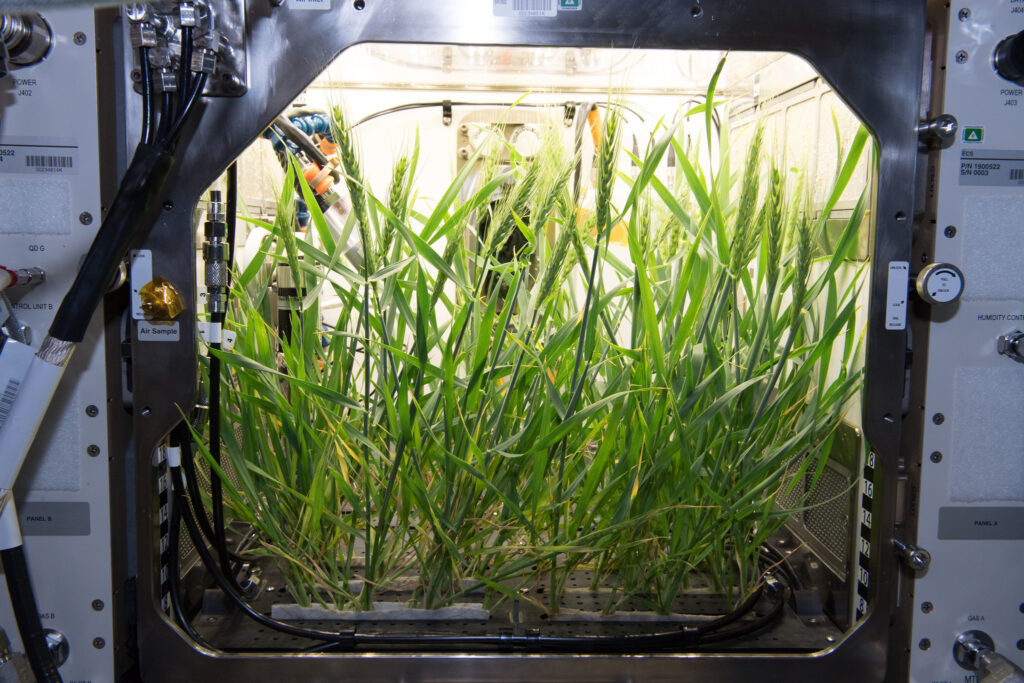Advanced Plant Habitat (APH)
Spaceflight Research Tool

- Full Name: Advanced Plant Habitat
- A.K.A: APH
- Affiliation: NASA, Sierra Space
- Country: United States
- Focus Areas: General Astrobotany
- Type: Spaceflight
- Spacecraft: International Space Station
- In Service: 2017 – Present
- Predecessor: VEGGIE
- Confirmed Plants Grown:
- “Española Improved” chile peppers
- Radish
- Dwarf Wheat
- Arabidopsis thaliana
- Key Features:
- Fully automated
- 180 calibrated sensors
Summary
The Advanced Plant Habitat (APH) is a fully automated plant growth unit developed in partnership between Sierra Space (fka ORBITEC) and NASA. APH is currently on the International Space Station and has been used for a variety of investigational plant experiments, including growth of chile peppers, dwarf wheat, and radish. APH is fully enclosed and closed loop, with nearly every variable possible controlled for. APH uses red, blue, green, and white LEDs for lighting. 180 sensors on APH relay real-time information such as temperature, oxygen content, and moisture levels in 4 places: the air, the ‘soil’, near the plant roots, and at the stem and leaf level.
“The Plant Habitat growing space accommodates a shoot area of 1708 cm2, a shoot height of 43 cm, a root area of 1853 cm2, and a root height of 5 cm. The Plant Habitat has an active temperature control system that uses thermoelectric coolers to heat and cool the air inside the shoot zone with a range of +18 to +30 °C and an accuracy of ±0.5 °C from the set point; temperature is uniform within ±1 °C in the plant canopy plane. Humidity is in the range of 50 to 90 percent relative humidity (RH) and is accurate within ±3 percent RH from the set point. Also in the shoot zone, Plant Habitat provides sensor capability to measure light levels in the photosynthetically active and the red/far red range and the ability to measure the surface temperature of a plant canopy or other sample surface. In the root zone, the standard Plant Habitat science platform provides a variety of sensing capabilities that include: temperature, moisture levels and oxygen content.” – NASA APH Overview

